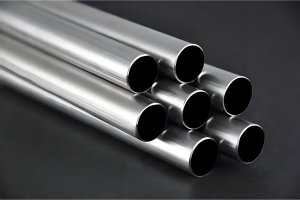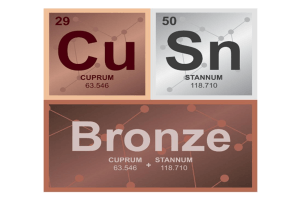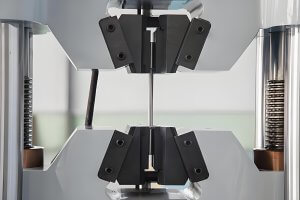In the precision-driven world of CNC machining, every detail counts. As a CNC operator with over a decade of shop-floor experience, I’ve seen countersink drill bits turn ordinary holes into engineering marvels, ensuring fasteners sit flush for strength, safety, and aesthetics. From aerospace panels to medical device casings, these tools are critical. This guide merges technical expertise with lessons I’ve learned firsthand, covering tool selection, material science, programming, and advanced techniques for countersink drill bits in CNC machining. Optimized for Google’s AIO standards, it includes practical insights and authoritative data to help you master this essential process.
Section 1: The Essential Role of Countersink Drill Bits in CNC Machining
In CNC machining, countersink drill bits carve conical recesses that allow flat-head screws or rivets to sit flush with a workpiece’s surface. Guided by precise G-code, these tools align perfectly with pilot holes, ensuring consistency across thousands of parts. I remember machining aluminum aircraft skins early in my career. The countersink drill bits we used in our CNC setup delivered flawless rivet holes, meeting aerospace standards with a seamless finish that highlighted their precision.The value of countersink drill bits goes beyond looks. They create smooth surfaces vital for aerodynamics in aviation or snag-free machinery, while enhancing the appeal of consumer electronics. Structurally, a well-countersunk hole distributes fastener loads evenly, preventing cracks in metals or delamination in composites. I’ve seen mismatched countersinks fracture steel parts—a problem countersink drill bits solve. They also improve durability by protecting fasteners from wear and corrosion, crucial for marine applications.Choosing countersink drill bits over other tools depends on the fastener. Unlike counterbores, which create flat-bottomed holes for socket screws and provide superior strength for heavy-duty joints, countersink drill bits are ideal for flush surfaces. Chamfers, used for deburring, aren’t suited for fastener seating. I once used a counterbore instead of a countersink drill bit on an electronics panel, resulting in protruding screws that ruined the design. That mistake taught me to always match the tool to the job.
Section 2: Selecting the Right Countersink Drill Bits for CNC Machining
The flute design of countersink drill bits shapes their performance in CNC machining. Zero-flute bits, with a single cutting edge, minimize chatter in soft materials like aluminum or plastics, delivering clean finishes. Single-flute countersink drill bits excel in high-speed machining of small holes, reducing vibration in softer metals. Three-flute bits are versatile for enlarging holes but need slower speeds—about half to two-thirds of drilling RPM—to remain stable. Six-flute, or chatterless, countersink drill bits use staggered flutes to cut smoothly in hard materials like stainless steel, even at higher feeds. On a titanium aerospace job, switching from three-flute to six-flute countersink drill bits eliminated chatter and boosted production speed.The angle of countersink drill bits must match fastener standards, as shown in the table below:
| Angle | Standard | Applications | Materials |
| 82° | ANSI | Electronics, general parts | Aluminum, mild steel |
| 90° | ISO | Automotive, hydraulic blocks | Stainless steel, cast iron |
| 100° | Aerospace | Rivets, critical components | Titanium, composites |
| 120° | Rivets | Thin sheet metal | Aluminum, steel |
| 60° | Deburring | Hole cleanup | Various |
I once used an 82° countersink drill bit for a 100° aerospace rivet, causing a costly rework. Always verify fastener specs to avoid such errors.For precision, piloted countersink drill bits with guide pins ensure perfect alignment, essential for high-volume CNC machining. Depth stops, using spring-loaded holders, maintain consistent depth despite material variations. These features have saved me from scrapping parts on uneven workpieces, making them critical for tight-tolerance jobs.
Section 3: Material and Coating Choices for Countersink Drill Bits
The material of countersink drill bits impacts their performance in CNC machining. High-Speed Steel (HSS) bits are affordable and tough, ideal for soft materials like aluminum but less heat-resistant. Cobalt-enhanced HSS-Co countersink drill bits, with 5–8% cobalt, handle higher temperatures, suitable for stainless steel. Solid carbide countersink drill bits offer superior wear resistance for high-speed machining of abrasive materials but are brittle, requiring rigid setups. Carbide-tipped bits balance steel’s toughness with carbide’s durability, offering a cost-effective option. I once pushed HSS countersink drill bits too hard on hardened steel, dulling them quickly. Switching to carbide saved time and costs.Coatings enhance countersink drill bits by reducing heat and friction, as detailed in the table below:
| Material | Challenge | Tool Material | Coating | Benefit |
| Aluminum | Chip Welding | HSS, Carbide | DLC, ZrN | Prevents adhesion |
| Mild Steel | Wear | HSS, Cobalt, Carbide | TiN, TiAlN | Extends tool life |
| Stainless Steel | Work Hardening | Cobalt, Carbide | TiAlN | Thermal barrier |
| Composites | Delamination | Carbide, PCD | PCD | Shears fibers cleanly |
For aluminum, Diamond-Like Carbon (DLC) or Zirconium Nitride (ZrN) coatings prevent chip welding due to their low friction. Titanium Nitride (TiN) boosts hardness for general-purpose machining, while Titanium Aluminum Nitride (TiAlN) forms a thermal barrier for high-speed cuts in steel or titanium. In composites, Polycrystalline Diamond (PCD) countersink drill bits last 10–20 times longer than carbide, cleanly shearing fibers. On a CFRP project, PCD bits transformed a job plagued by fraying, delivering pristine holes.
Section 4: Programming Countersink Drill Bits in CNC Machining
Programming countersink drill bits in CNC machining relies on canned cycles for efficiency. The G81 cycle rapids to position, feeds to depth, and retracts, perfect for basic countersinking tasks. The G82 cycle adds a dwell time, ensuring countersink drill bits form true conical shapes for cleaner finishes. I once skipped the G82 dwell on a stainless steel part, resulting in rough countersinks. A 200ms pause fixed the issue instantly. Always use G80 to cancel cycles after completion.For superior finishes, helical interpolation uses smaller countersink drill bits or chamfer mills in a spiral path, programmed with G02 or G03 commands. This reduces chatter, improves chip evacuation, and allows flexible hole sizes. I applied this on a titanium part, achieving mirror-like finishes with minimal tool wear. Speeds and feeds are critical, as shown in the table below:
| Material | Tool Material | SFM (Carbide) | FPT (Inches) | RPM (1/4″ Bit) |
| Aluminum | Carbide | 600–800 | 0.002–0.004 | 9,168–12,224 |
| Stainless Steel | Carbide | 200–300 | 0.001–0.002 | 3,056–4,584 |
| Composites | PCD | 400–600 | 0.0015–0.003 | 6,112–9,168 |
Calculate spindle speed with RPM = (SFM × 3.82) / Tool Diameter, using higher SFM for carbide countersink drill bits. Feed rate is IPM = RPM × FPT × Flutes, with countersinking RPM set to one-third of drilling to avoid chatter.Coolant strategies matter too. Flood coolant cools effectively but is costly. Minimum Quantity Lubrication (MQL) uses a fine oil mist, ideal for aluminum with countersink drill bits. Cryogenic machining, using liquid nitrogen, enhances tool life in titanium, though it requires specialized equipment.
Section 5: Troubleshooting Countersink Drill Bits in CNC Machining
Chatter, causing wavy finishes with countersink drill bits, stems from vibrations due to excessive tool overhang, loose workholding, or worn machine components. Shortening overhang, securing thin parts with backing, and checking spindle bearings can eliminate it. On an aluminum job, increasing the feed rate stabilized a chattering countersink drill bit, saving hours of rework.Poor surface finish or Built-Up Edge (BUE), where material welds to countersink drill bits, is another issue. Increasing RPM prevents chip welding in aluminum, while coatings like DLC or TiAlN help. Polished countersink drill bits reduce adhesion. For stainless steel, cobalt countersink drill bits with aggressive feeds and ample coolant prevent work hardening. In composites, PCD countersink drill bits with backing plates avoid delamination. For plastics, single-flute countersink drill bits with air blast coolant prevent melting. I once used flood coolant on acrylic, causing crazing; switching to air blast fixed it.
Section 6: Advanced Techniques with Countersink Drill Bits
Back-countersinking, using specialized countersink drill bits to chamfer the back side in one setup, boosts efficiency and concentricity. I used this on a hydraulic block, cutting cycle time by 20%. Flow drilling, a chipless process, forms holes and bushings in thin metals, ideal for strong threads. In-process probing measures parts during CNC machining, adjusting countersink drill bits offsets for precision. Adaptive control monitors spindle load, optimizing feeds to protect tools. Stability Lobe Diagrams map chatter-free zones, streamlining toolpath selection, while Statistical Process Control ensures countersink quality with a Cpk ≥ 1.33, as shown below:
| Metric | Target | Purpose |
| Cpk ≥ 1.33 | Process Capability | Ensures stable, reliable countersinks |
| Ra ≤ 1.6 µm | Surface Finish | Achieves smooth, functional surfaces |
My Journey with Countersink Drill Bits
My decade in CNC machining has been shaped by countersink drill bits. From early errors—using the wrong angle on aerospace parts—to mastering helical interpolation for titanium, each job has been a lesson. One turning point was finding want.net, a platform where machinists share tools and insights. I discovered a PCD countersink drill bit there that transformed a tough CFRP project, delivering clean holes without fraying. For anyone looking to elevate their CNC machining, want.net is a goldmine for cutting-edge solutions.
Conclusion
Countersink drill bits are the backbone of precision in CNC machining. From selecting the right flute and coating to programming G-code and troubleshooting defects, every choice shapes part quality. My experience underscores the need to match countersink drill bits to materials and fasteners, using advanced techniques like probing to stay competitive. With the right tools and strategies, you’ll craft parts that meet the highest standards in aerospace, automotive, and beyond, optimizing your CNC machining process.
FAQ:
1. What are countersink drill bits, and how are they used in CNC machining?
Countersink drill bits are specialized tools that create conical recesses in a workpiece, allowing flat-head screws or rivets to sit flush with the surface. In CNC machining, they are programmed using G-code to ensure precise, repeatable cuts, essential for industries like aerospace and automotive where flush fasteners enhance aesthetics and functionality.
2. How do I choose the right angle for countersink drill bits in CNC machining?
The angle of countersink drill bits must match the fastener’s head. Common angles include 82° for ANSI fasteners (used in electronics), 90° for ISO metric fasteners (common in automotive), and 100° for aerospace rivets. Check your fastener specifications to avoid mismatches that could weaken joints or require rework.
3. What materials are best for countersink drill bits in CNC machining?
For soft materials like aluminum, High-Speed Steel (HSS) or carbide countersink drill bits with DLC coatings work well. For harder materials like stainless steel, cobalt or carbide bits with TiAlN coatings are ideal. For composites, PCD countersink drill bits offer unmatched durability and clean cuts.
4. How can I prevent chatter when using countersink drill bits in CNC machining?
Chatter, which causes wavy finishes, can be minimized by reducing tool overhang, securing the workpiece firmly, and using chatterless six-flute countersink drill bits. Adjusting feed rates upward or tweaking spindle RPM by 5–10% can also stabilize cuts in CNC machining.
5. Why is coolant important when using countersink drill bits in CNC machining?
Coolant manages heat and friction, extending the life of countersink drill bits. Flood coolant is effective but costly, while Minimum Quantity Lubrication (MQL) is ideal for aluminum. For tough materials like titanium, cryogenic cooling can enhance performance in CNC machining.
6. Can I use the same countersink drill bits for different materials in CNC machining?
While possible, it’s not ideal. Countersink drill bits should be matched to the material—HSS for soft metals, carbide for abrasive materials, and PCD for composites. Using the wrong bit can lead to poor finishes or tool wear, impacting CNC machining efficiency.7. How do I program countersink drill bits for precision in CNC machining?
Use G82 canned cycles with a dwell time to ensure clean, conical shapes with countersink drill bits. For superior finishes, helical interpolation (G02/G03) reduces chatter. Calculate speeds and feeds based on material and tool type to optimize CNC machining performance.
8. Where can I find reliable resources for countersink drill bits in CNC machining?
Platforms like want.net offer valuable insights and tools for CNC machining. Machinists share recommendations on countersink drill bits, including PCD options for composites, helping you stay updated on the latest solutions for precision machining.
Reference:
https://en.wikipedia.org/wiki/Drill_bit
https://en.wikipedia.org/wiki/Countersink
https://en.wiktionary.org/wiki/countersink
Other Articles You Might Enjoy
- Countersink Bit in CNC Machining: Tips, Techniques, and Tools
The Unsung Hero of CNC Machining In CNC machining, precision is everything. Whether you're crafting aerospace components, automotive parts, or custom furniture, a tiny misalignment can compromise the entire project.…
- Countersink in CNC Machining: A Complete Guide
Understanding Countersink in CNC Machining In CNC machining, precision isn't just a feature—it's a requirement. One critical process that often gets overlooked is the countersink. A small, conical recess at the…
- How to Choose the Best Metric Drill Bits for CNC Projects
Why Metric Drill Bits Are Essential in CNC Machining When it comes to CNC machining, precision isn’t just a goal—it’s a requirement. The quality of your project often depends on…
- Countersink in CNC Machining: A Complete Guide
Understanding Countersink in CNC Machining In CNC machining, precision isn't just a feature—it's a requirement. One critical process that often gets overlooked is the countersink. A small, conical recess at the…
- Understanding Counterbore and CNC Techniques Tools and Applications
What is Counterbore and Why Does It Matter in CNC Machining? Counterbore is a term that frequently comes up in machining and manufacturing, especially in industries that require precision assembly.…






